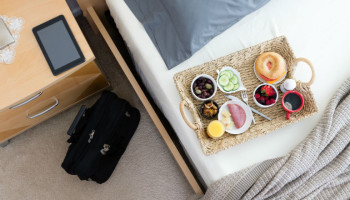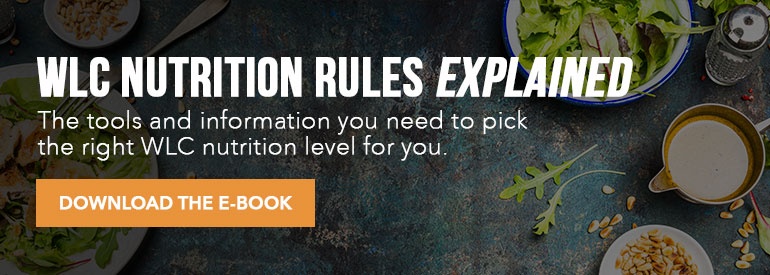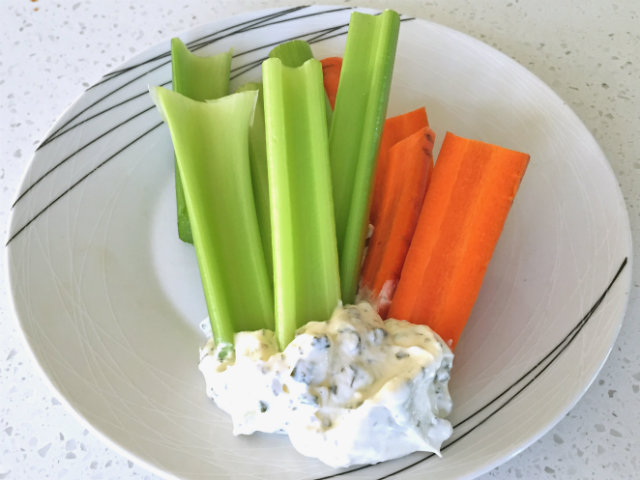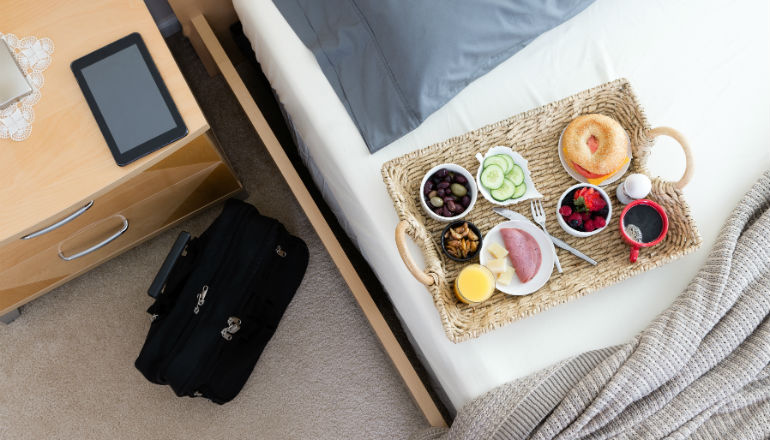 Reading Time: 9 minutes
Reading Time: 9 minutesMy job involves a lot of travel. In fact, I am on a plane heading to coaching and teaching engagements every second week or so. I know firsthand that it can be tough to eat right when you are on the road.
When you are traveling, it is important to be mindful not only about what you eat, but also about when you eat. Going for hours and hours without food or water can be just as detrimental to your health and energy levels as eating the wrong types of food. And if you don’t plan ahead, most of what you’ll have to choose from is so bad that I would be hard pressed to call it “food.”
So if you’re like me and you want to maintain your good habits while on the road, here’s what I recommend. First, let’s look at what’s likely available, and then discuss the single best thing you can do to keep eating healthy when you travel.
Eating Options on the Road
Let’s start first with the four sources for food that are most likely available to you while you’re en route to your destination. Each option has some pros and cons (but mostly cons).
1. Gas Stations
You’ll be challenged to find something here that is nutritious and contains protein and good fats. Gas stations offer a plethora of carb-loaded snacks such as chips, cheese puffs, and candy. Nuts are in abundance, but are usually loaded with salt and slathered in processed vegetable oils that are high in inflammation-promoting omega-6 fats. Obviously, donuts are on the no-no list as are hot dogs and all the other junk foods that comprise most of the “food” that gas stations offer.
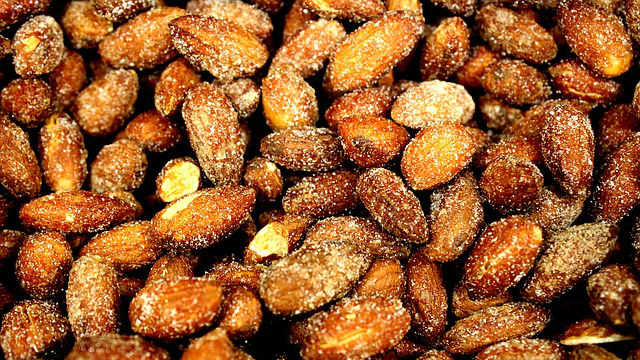
Most nuts sold at a gas station are loaded with processed vegetable oils and salt.
The best choice you have at any gas station is a simple piece of fruit. Often they carry bananas or apples. A close second is a nut bar that is all natural and not loaded in sugar and chocolate.
In general, meal replacement bars and protein bars aren’t that healthy. Just because something has protein added to it, doesn’t make it good for you. These bars often have loads of sugar and additives and the source of protein is not so good. Other than whole fruit, natural nut bars, and bottles of water, I would stay away from everything at a gas station.
2. Fast Food Joints
These places mainly offer meals made of processed, refined carbohydrates combined with sub-par protein sources, all of which is slathered in bad fats. Yes, I’m talking about that classic road food of burgers and fries. And let’s not forget the sodas! These are loaded with sugar and often made with high fructose corn syrup. All of this food is calorie dense yet nutritionally deficient. Fast food is a sure-fire recipe for piling on the pounds and feeling like crap while traveling.
To be honest, there is almost nothing at a fast food joint that I would eat. If you’re lucky, you might find a salad where you’ll be able to pick off any of the yucky ingredients. Just be warned that it might not leave you with much to eat and it’s unlikely to come with a dressing that’s not full of garbage.
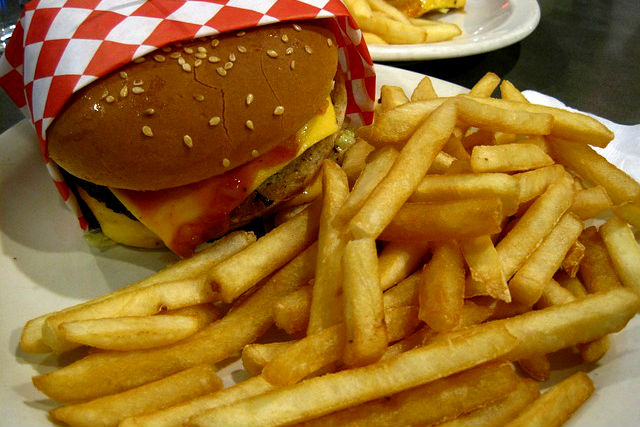
Does this really need an explanation as to why it should be avoided?
3. Corner Stores, Airports, and Airlines
These convenience-type places may offer sandwiches or wraps, if you are lucky. But mostly likely these items will be made with white bread, cheese, and ham. And by that I mean cheese that tastes and digests like plastic, bread made from highly refined white flour, and ham that is packed full of nitrates.
Oh, right, let’s add a muffin and a coffee that has powdered creamer created with corn syrup solids to top it off! Corn syrup solids are lethal in my book since they are made from partially hydrogenated vegetables oils. If you want an inflammatory meal that will leave you bloated and dealing with stomach pains, this is a perfect option.
Some stores offer salads, but once again the dressing will most likely not be healthy. Eat the salad, avoid the croutons and other bread-like bits, and toss the dressing. Most of these stores will have fresh fruit, and I have noticed more places offering hard-boiled eggs and assortments of healthier foods in their deli coolers. Grab the packages with the fruit, veggies and eggs. Skip the ones with the processed meat and cheese.
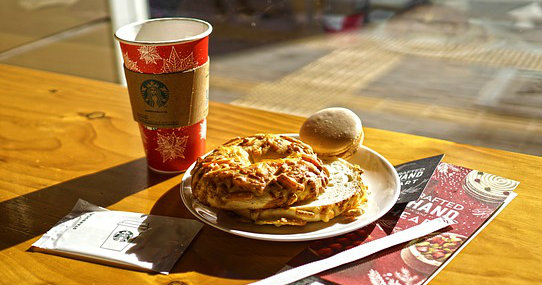
You can probably find this “meal” at any airport — but that doesn’t mean you should eat it.
4. Restaurants
The best chance you have of eating right while on the road is to sit at a restaurant. There will be a wider variety to choose from with healthier options that contain ingredients that aren’t as refined or processed. But even then, it is important to make educated choices from the menu. Steer clear of the club sandwiches and other meals that use bread as their base. Also steer clear of pastas — these are loaded with carbs derived from wheat.
A lot of restaurants offer salads that are full of variety. You can’t go wrong with a chicken salad — just make sure you get the dressing on the side so you can control your portion. The downside of going to a restaurant, of course, is that it is a bit harsher on the wallet and it takes more time. If you are strapped for cash and/or in a rush, sitting down to eat may not be an option.
A Special Note: Don’t Forget Grocery Stores
Grocery stores might not seem like a place to get quick food, but they are often your best option for portable, easy, healthy food. Hit the deli section to grab hard-boiled eggs, swing through the bulk aisle for your favorite nuts and seeds, and head for the fresh produce to stock up on fruit and snack-able veggies like carrots. Typically stores will have ready-made packages of sliced fruit and vegetables, just avoid whatever “ranch” dip comes with them.
Also be sure to stop by the “hot foods” area if the store has one. While most of the foods here will not be great choices, you can often find grilled chicken breast or roasted whole chickens. You may find steamed vegetables, as well. Avoid breaded or fried foods and any prepared potato, rice, or quinoa salads covered in dressings as they are likely full of undesirable ingredients.
If you’re lucky enough to find a grocery store with a salad bar — dive in!
How Do You Keep Eating Healthy When You Travel?
If you have made a commitment to make healthier food choices and honor your body, you don’t want to get stuck in the position of not having a single good food option on hand. The keys to preventing yourself from winding up in this situation are organization and planning.
The single best way to avoid eating poor quality food is to bring food with you. It may be a pain to carry around, especially when you are flying, and it may require that you put more time into packing for your trip, but your body will thank you in the end. You will feel better both during and after your travels. (My seven-day meal plan has many healthy options that work well for travel. These are the recipes I eat all the time.)
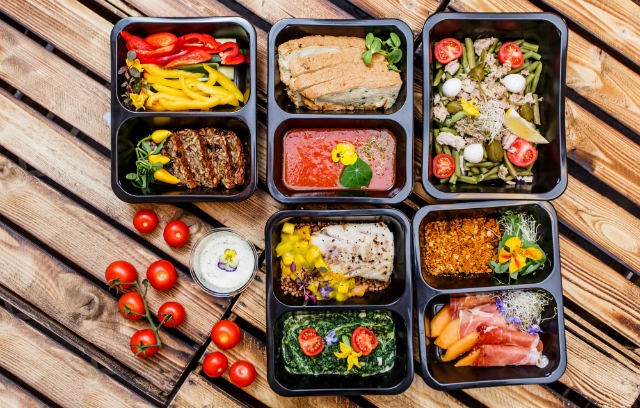
With a little effort, your food can take you a long way.
My Favorite Foods to Eat While Traveling
Hard-boiled Eggs: Hard-boiled eggs are a perfect portable snack. If you keep the shells on, they are pretty durable. I put them right in my hand bag. They are a whole food, not processed in any way, and are comprised of protein and good fats.
Chopped Veggies: Veggies will create volume in your belly and make you less inclined to snack on things like chips. Raw veggies paired with a low-fat healthy dip such as salsa or hummus are a great way to get your dose of antioxidants.
Protein Shake: These are handy to have since most convenient snacks tends to be carb-based. A shake will provide a boost of protein that you can pair with your piece of fruit for a more balanced mini-meal. Plan ahead by measuring your powder into your container and just add water when you are ready.
Salads: Most packaged salads are okay, but use the dressing sparingly or even better see if there is any way you can get your hands on some olive oil and balsamic vinegar. This way you’ll avoid nasty ingredients and the olive oil will provide you with a more healthy monounsaturated fat.
Nut Bars: If you can find a snack bar that is made with nuts and contains minimal added sugar that is derived from natural sources such as honey, these are okay. But avoid the processed protein bars loaded with chocolate and other sweet delicious treats. Most of these are way too similar to candy bars.
Fruit: There is no easier snack than a banana or an apple. Luckily, most airport food stands and corner stores do carry these. Fruit is a whole, natural source of carbohydrates.
Water: Carry a water bottle with you at all times. This is essential for your energy level and for healthy digestion. Even on long flights, I make sure to drink constantly. I do usually end up going to the restroom often, but I have found that staying fully hydrated is the key in mitigating jet lag.
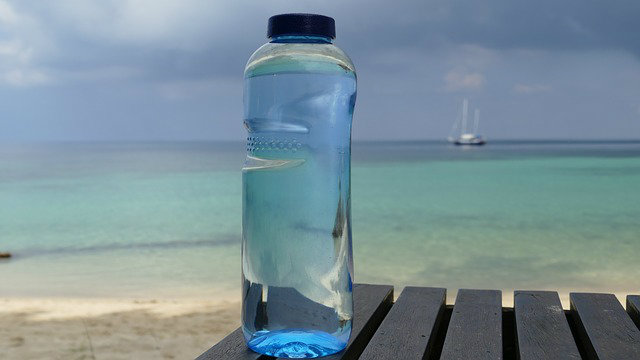
My water bottle goes everywhere with me.
My Simple Travel Advice to You
- Plan ahead and pack healthy snacks that are made of whole foods.
- Bringing your own protein sources is key since quality protein is the most expensive and least available food while traveling.
- If you do purchase food, try to avoid the snacks at the gas station or newsstand at the airport.
- If you can find a vendor that sells salads with some chicken or hard-boiled eggs, that will be your best bet as far as quick and easy pre-prepared food.
- Alternatively, grab a fruit-and-nut bar that contains no additives and a piece of fruit such as a banana or apple.
- Always keep a water bottle on you.
Stick to these options and I guarantee you will be eating healthier food, eating regularly, and staying hydrated. All of this will ensure you feel better, look better, and actually enjoy your business trip or vacation, too.
